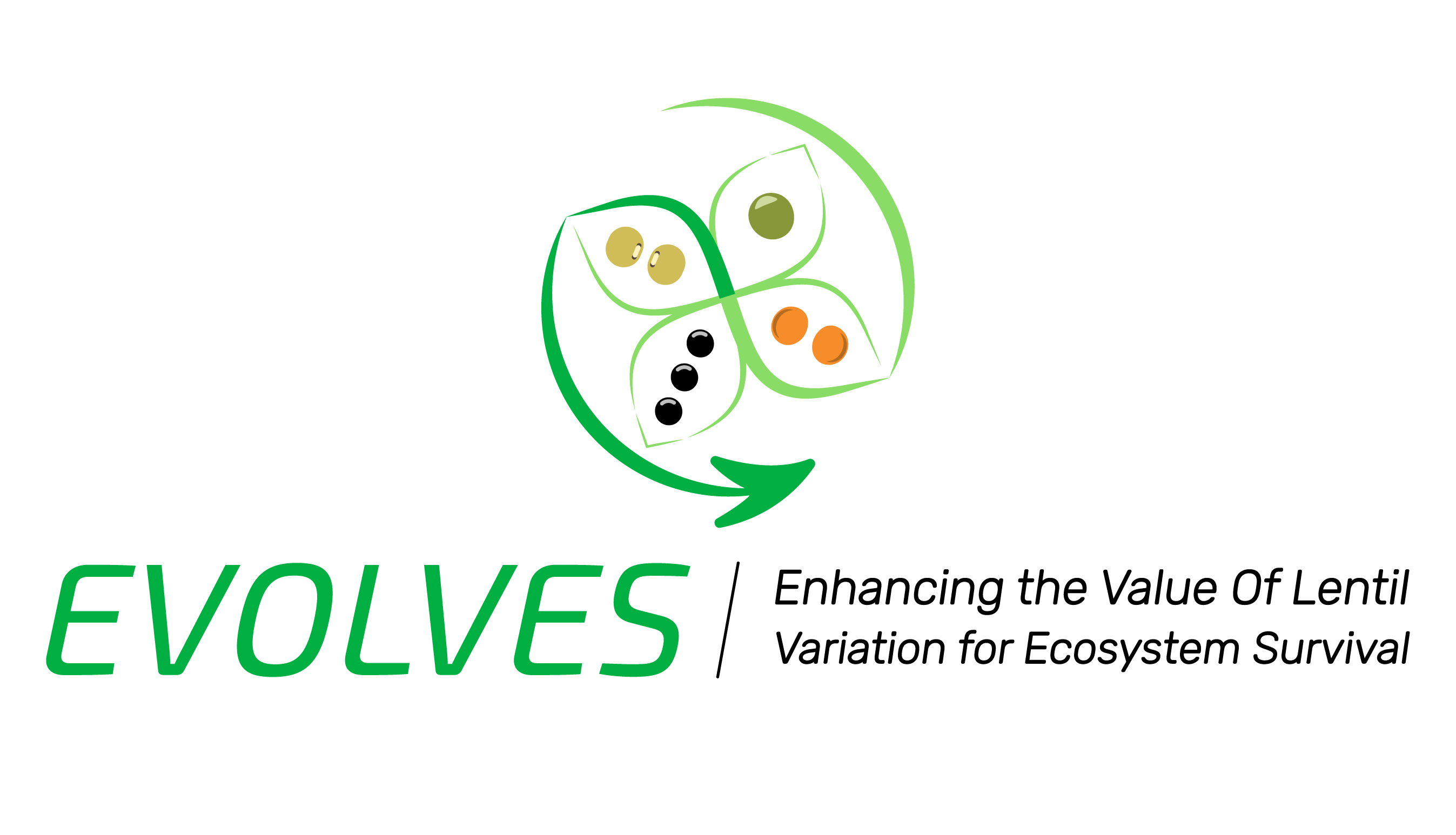EVOLVES Activity 2- Genomics and phenomics of nutritional and food functionality characteristics of lentil

Characterizing nutritional and food functionality characteristics of lentil to understand how to maintain or enhance these when using wide crosses
Using lentil as whole flour provides the nutritional value of whole seed without any complicated, energy-intensive processing steps. Improving quality traits, such as protein quantity and quality, as well as mineral and vitamin contents, will supply food companies with superior feedstocks for value-added product development. While there have already been some surveys of these traits, they have largely been done on only a few cultivated lines or blends found in market samples, and the effect of the environment on these traits is largely unknown. The use of wild germplasm is expected to affect variability in quality traits, and in some cases, introduce novel functionality to the offspring. Importantly, incorporating wild germplasm will likely decrease seed coat permeability, which would negatively impact the ‘quick cooking’ advantage of whole lentils over other pulses.
Genotype-specific nutritional information for further exploitation by both the lentil breeding program and by industry stakeholders in future marketing strategies.
Genotype-specific food functionality information, such as heat-induced gelation, viscosity and pasting properties, which will feed into food application development process by our commercial partners.
Markers for nutritional quality and food functionality traits for use in the breeding program.
Compile genotype-specific information on the protein content, amino acid profile of Lentil seeds.
Contrast the protein content and amino acid profile across diverse Lens genotypes in order to detect any genotype-specific variation.
- Hang J, Shi D, Neufeld J, Bett KE, House JD.Prediction of protein and amino acid contents in whole and ground lentils using near-infrared reflectance spectroscopy..LWT. 2022; 165:113669.
- Hang J (2022). Genome-wide association study of seed protein and amino acid contents in cultivated lentils as determined by near-infrared reflectance spectroscopy [Master’s thesis, University of Manitoba]. MSpace. https://mspace.lib.umanitoba.ca/handle/1993/36250.
- Wright, D. M., Hang, J., House, J. D., & Bett, K. E. (2025). Breeding potential of cultivated lentil for increased protein and amino acid concentrations in the Northern Great Plains. Crop Science, 65, e70085. https://doi.org/10.1002/csc2.70085
Investigate the effects of crossing with wild lentil on seed protein and amino acid contents.
Quantify the amount of total protein and 18 specific amino acids in the RILs developed from an interspecific cross using near-infrared (NIR) spectroscopy.
Extend the model developed by Jiayi Hang in Protein characterization: LDP 2020-2021 using NIRS for use with single Lentil seeds.
Evaluate protein digestibility-corrected amino acid scores (PDCAAS) for specific Lentil cultivars and compare to protein levels. Use these results to make recommendations for changing legislation to be more inclusive of alternative protein sources.
Measure the levels of disulfide bonds and free sulfhydryl groups in specific Lentil cultivars and use these values to help explain the drop in total protein levels. Also use this information to see if there are any breeding targets for increasing these levels in our current germplasm.
Evaluate the intensity and stability of the red colour present in many lentil genotypes through processing into intermediate and end products.
Determine if there are genotype-specific differences in colour stability.
Confirm whether a more intense dehulled seed colour is predictive of a more intense final product.
Evaluate any differences in red colour retention during baking as compared to boiling of final products.
Profile the carotenoid compounds in both wild and cultivated germplasm to determine the range of variability in concentration.
Identify a candidate for the Yc gene controlling the red vs yellow cotyledon colour in the previously identified region on Lcu.2RBY.Chr1.
Characterize the nutritional and food functionality characteristics of lentil to understand their B vitamin profile. Specifically, parental material of our recombinant imbred line (RIL) and nested association mapping (NAM) populations.
Develop a robust protocol for characterizing B vitamins in lentil seeds using ultra-performance liquid chromatography-selected reaction monitoring mass spectrometry (UPLC/MRM MS).
Utilize existing genotypic datasets to perform QTL analysis and look for trait-associated genetic markers for use in the breeding program for genetic improvement of B vitamin levels in lentil.
Quantify the mineral and trace element profiles for a panel of elite Lentil cultivars.
Identify germplasm with high levels of beneficial minerals and trace elements to act as breeding material when targeting increased nutritional value.
Identify potential markers for use in breeding programs when targeting increased nutritional value.
Measure seed coat thickness and how many seeds absorb water across multiple site-years to determine the stability of this trait. Specifically, we looked at LR-68 recombinant imbred lines.
Explore the genetic differences between the wild and domesticated lentil dormancy using existing genotypic data for LR-68 to perform QTL analysis and look for trait-associated genes and markers for use in the breeding program.
Explore using optical coherence tomography (OCT) as a non-destructive and efficient measurement of seed coat thickness.
Dissect any potential correlations between seed coat thickness and biological characteristics such as imbibition, dehulling, and cooking time.

